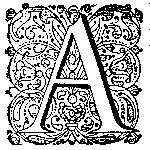Worldly Threads
Japonse Rokken and Self-Fashioning in Dutch-American Portraiture
DOI:
https://doi.org/10.51750/emlc12428Keywords:
Japonse rok, indienne silk, patroon portrait, Isaac de Peyster, Dutch America, self-fashioningAbstract
This article examines the layered history of Japonse rokken, European silk production, and self-fashioning in Dutch-American portraiture. First imported from Japan and subsequently copied by European tailors, Japonse rokken became popular in the Dutch Republic as the Dutch East India Company developed an exclusive trade relationship with Japan. By the early eighteenth century, European weavers had begun producing silks, referred to as indiennes, with dynamic patterns inspired by Asian design motifs. On both sides of the Atlantic, elite Dutchmen fashioned themselves in these silk robes: a ca. 1700-1705 patroon portrait, for example, presents New York merchant Isaac de Peyster (1662-1728) wearing a Japonse rok cut from an indienne. While the Dutch community in early New York has been considered peripheral to the Dutch Republic, I argue that in adopting a garment styled after Japanese robes, tailored from silk woven in Europe, and painted in a Hudson Valley style, the Dutch-American elite signalled their ability to access, understand, and participate in intellectual and mercantile networks that spanned from Asia to Europe to the Americas.
Downloads

Published
Issue
Section
License
Copyright (c) 2023 Cynthia Kok

This work is licensed under a Creative Commons Attribution-NonCommercial 4.0 International License.





